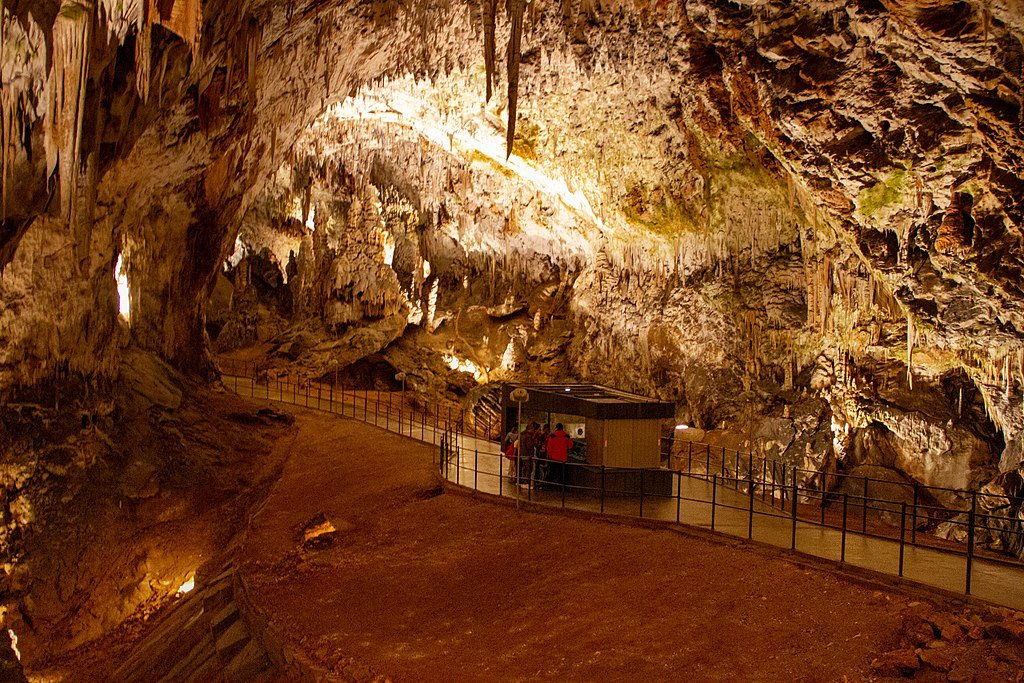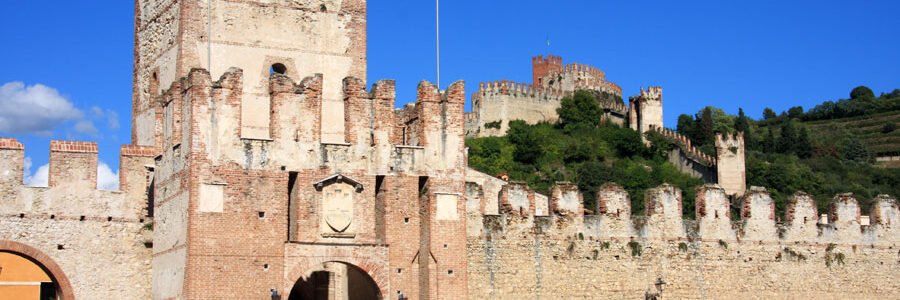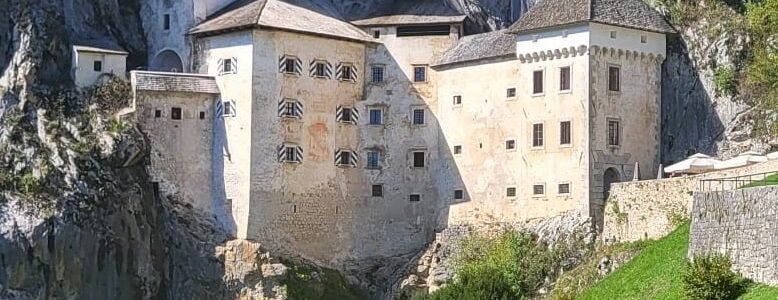Postojna Cave Guide
Postojna Cave Guide
Postojna Cave’s intro
Postojna Cave is one of Slovenia’s most famous attractions and among the most visited underground sites in Europe. Stretching for more than 24 kilometers, this karst system is a world of stalactites, stalagmites, halls, and tunnels shaped over millions of years. Unlike many caves where only scientists and explorers are allowed, Postojna is open to everyone thanks to a unique underground train that has carried visitors since the 19th century.
A Long History of Discovery
The first written mention of Postojna Cave dates back to the 17th century, but people had known of its existence long before. In 1818, local lamplighter Luka Čeč discovered new chambers during preparations for Emperor Francis I’s visit. That discovery turned Postojna into a global attraction. Ever since, travelers, royalty, and scientists have walked its passages. Today, the site represents both a geological treasure and a cultural landmark of Slovenia.
A Stop on Wider Routes
Due to its position between Italy, Austria, and Croatia, Postojna Cave often becomes part of larger European journeys. Its location on major highways makes it a practical and rewarding pause. Many travelers, for example, plan a transfer from Venice to Budapest and choose to stop in Postojna for a few hours. That short break adds a world-class natural wonder to an otherwise direct itinerary.
The Underground Train
One of the most distinctive features of Postojna Cave is its train. Introduced in 1872, it was the first cave railway of its kind in the world. Today’s electric train takes visitors almost 4 kilometers inside the cave, making it possible to see vast chambers without exhausting hikes. The ride itself is part of the thrill: moving through illuminated tunnels while stalactites hang close above creates a cinematic atmosphere.
The Great Hall and Other Chambers
Once the train stops, the walking tour begins. Visitors step into the Great Hall, famous for its size and acoustics. Concerts have been held here, with the rock walls acting as a natural amplifier. Other highlights include the Brilliant, a pure white stalagmite considered the cave’s symbol, and the Spaghetti Hall, filled with thin, delicate formations. Each chamber has its own character, shaped by water in different ways.
Unique Wildlife – The Proteus
Postojna Cave is also home to one of the most unusual creatures in Europe: the olm, or proteus. Known locally as “human fish” because of its pale skin, this blind amphibian lives only in subterranean waters of the Dinaric Karst. It can survive for years without food and has fascinated biologists for centuries. Visitors can see live specimens in a special aquarium inside the cave complex.
Accessibility and Visitor Comfort
Unlike many cave systems that demand strenuous effort, Postojna is designed for all ages. The combination of the train ride and relatively short walking sections makes it accessible even for families with children. Inside, the temperature is around 10°C year-round, so a jacket is recommended. Paths are lit and maintained, but comfortable shoes make the visit easier.
The Park Above Ground
The cave is part of a larger park area that offers more than just underground exploration. Restaurants, souvenir shops, and walking paths surround the entrance. The Vivarium, an educational center, introduces visitors to cave biodiversity. For history enthusiasts, the exhibition “Expo Cave Karst” explains the global significance of karst landscapes and how water shapes stone into complex underground networks.
Predjama Castle – A Unique Pairing
A short drive from Postojna Cave lies Predjama Castle, built dramatically into a cliff face. This Renaissance fortress seems to grow directly out of the rock. The combination of the cave system and the castle makes for one of Slovenia’s most photographed attractions. Many visitors plan both in one day, experiencing nature and history side by side.
Cultural Significance
Postojna Cave has long been more than a natural wonder. It is part of Slovenia’s identity, appearing in literature, postcards, and national symbols. Famous visitors include explorers, scientists, and artists who drew inspiration from its halls. Its role in tourism also made Postojna an economic center for the region, attracting millions of guests over the last two centuries.
Events and Special Experiences
From time to time, the cave becomes a venue for special events. Classical music concerts in the Great Hall are legendary. During December, a live nativity scene is staged inside, with hundreds of performers. These unique occasions transform the cave into a cultural stage, combining natural beauty with human creativity.
Tips for Travelers
-
Tickets: It’s best to book in advance, especially during summer.
-
Duration: The standard tour lasts about 90 minutes.
-
Dress: Even in August, bring a jacket due to the constant cool temperature.
-
Photography: Limited in some sections, but allowed in designated areas.
-
Location: Easily accessible by car or bus, with large parking facilities available.
Day Trips from Postojna
The cave’s central location allows for easy excursions. Ljubljana, Slovenia’s capital, is less than an hour away. The coastal towns of Piran and Koper are also within reach, offering a contrast of medieval seaside charm. To the north, Lake Bled and the Julian Alps provide alpine scenery. Travelers often combine Postojna with a broader exploration of Slovenia’s diverse landscapes.
Why Postojna Stands Out
Many caves around the world are impressive, but Postojna has several advantages. Its size is vast, yet it remains easily accessible. The train makes the experience unique, turning exploration into comfort. Its biodiversity adds a scientific dimension, while cultural events provide a human touch. This combination of geology, history, and visitor friendliness explains why Postojna Cave is among the most visited in Europe.
In the end
Postojna Cave is not just another stop on the map – it is an encounter with time, nature, and culture all at once. Whether you ride the underground train, marvel at the Brilliant stalagmite, or learn about the proteus, every part of the visit leaves a memory. Combined with Predjama Castle and the surrounding park, it forms a complete experience worth including in any journey. For official details on tours, schedules, and exhibitions, visit the Postojna Cave official website.
Postojna Cave Guide
Postojna Cave Guide introduces one of Europe’s most famous cave systems, known for its underground halls, stalactites, and a small train ride that takes visitors deep inside. It is a well-organized attraction, with guided tours available throughout the year.
Located close to Ljubljana, Postojna Cave is simple to include in private transfers across Slovenia and towards Italy, Austria, or Croatia. It works well both as a half-day trip or a stop on a longer journey.
- Venice to Budapest long-distance ride
- Ljubljana to Postojna Cave transfer option
- Postojna Cave to Ljubljana private ride
- Ljubljana Airport to Opatija transfer service
- Ljubljana Airport to Trieste connection
- Ljubljana to Trieste direct route
Postojna Cave Guide: Accessible, Unique, and Impressive
- Underground railway through large cave halls
- Guided tours available daily
- Close to highways for easy access during transfers
- Suitable for families and group visits
- Part of wider itineraries across Slovenia
A Natural Landmark Along Key Travel Routes
Postojna Cave Guide helps you include the visit with ease
See schedules, tickets, and full visitor details on the Postojna Cave official site.
RECENT POSTS
- How to get from Trieste to Zagreb October 21, 2025
- How to get from Ljubljana to Kranjska Gora October 18, 2025
- How to get from Ljubljana to Budapest October 17, 2025





























































Leave a Comment